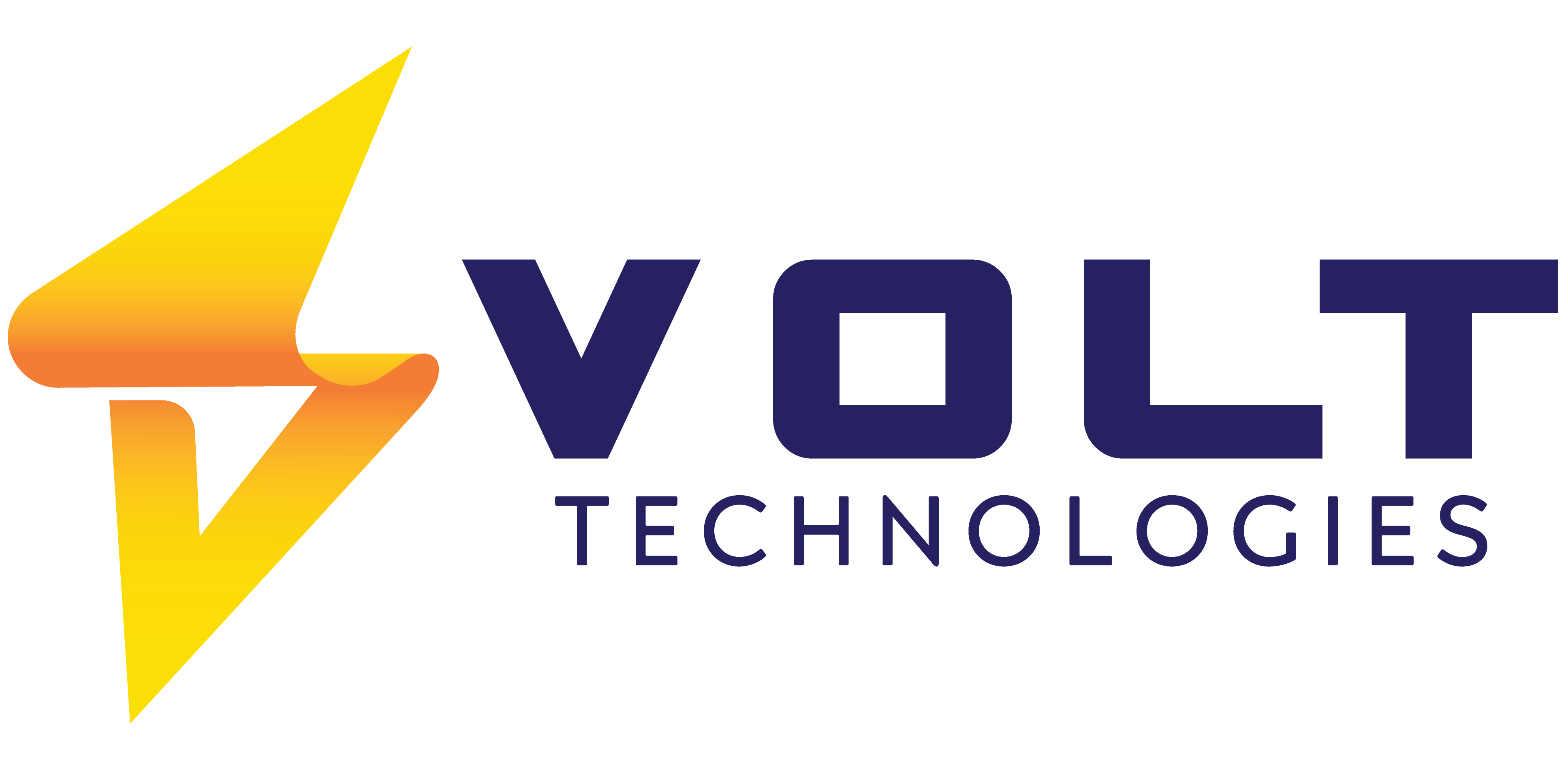Fixing Inventory Bottlenecks with a Unified Supply Chain.


Microsoft Dynamics 365 | Simplify your IT footprint and make decisions faster.
- October 13, 2025
Introduction
For many small and mid-sized businesses, managing inventory efficiently can be one of the biggest operational challenges. From inaccurate stock levels to delayed order fulfillment, these inventory bottlenecks often lead to frustrated customers, lost revenue, and wasted resources. The root cause? A disconnected supply chain where systems, data, and teams don’t communicate effectively.
By embracing a unified supply chain approach, businesses can transform how they manage inventory control, enhance supply chain optimization, and achieve real-time visibility across every stage of operations. A unified system connects inventory management, demand forecasting, and warehouse management systems into one seamless workflow, helping decision-makers respond faster and smarter.
At Volt Technologies, we specialize in implementing Microsoft Dynamics 365 Business Central, an all-in-one solution designed to unify your supply chain management. In this article, we’ll explore how a unified approach can help you reduce supply chain bottlenecks, improve forecasting accuracy, and create a more resilient business ready for growth.
Understanding Inventory Bottlenecks
Inventory bottlenecks occur when demand, supply, or internal operations fail to align, leading to delays, stockouts, excess inventory, and frustrated customers. These bottlenecks often arise from poor demand forecasting, fragmented systems (e.g. sales, warehouse, purchasing), manual processes, or a lack of real-time inventory tracking across the supply chain.
Common Causes of Inventory Bottlenecks
- Siloed systems and data gaps: When sales, procurement, and warehouse teams operate on disconnected platforms, critical inventory signals are lost. According to Gartner, only about 6% of companies report having full end-to-end visibility across their supply chain, which means most firms are operating with blind spots.
- Inaccurate demand forecasting: Without unified systems, forecasts often rely on legacy spreadsheets or delayed reporting. This mismatch between demand and supply triggers either overstocking or stockouts.
- Delayed replenishment cycles & long lead times: Pressures such as global sourcing, supplier constraints, or logistics delays widen the gap between when stock is needed and when it arrives. Deloitte reports that average lead times for production materials in April 2024 hovered around 79 days, up from ~65 days in pre-pandemic eras.
- Manual intervention and error-prone processes: Operations that require human reconciliation across systems often introduce errors or delays.
- Lack of agility in responding to disruptions: In volatile markets, unforeseen events (supplier issues, transport blockages, regulatory changes) quickly magnify small inefficiencies into full bottlenecks.
These root causes underscore why inventory control and inventory management alone cannot solve bottlenecks, they need to be tightly integrated into a unified supply chain management system. In the next section, we’ll explore how a unified supply chain approach addresses these core challenges.
Why a Unified Supply Chain Is the Solution
In today’s volatile business environment, companies can no longer afford fragmented supply chains. A unified supply chain connects every process, inventory management, purchasing, production, logistics, and sales, into one integrated ecosystem. This connection transforms data into actionable insight, enabling organizations to anticipate issues, respond faster, and optimize resources across the board.
According to McKinsey’s 2024 Global Supply Chain Pulse, organizations that digitally unify their operations see 25–30% higher on-time delivery rates and up to 20% lower inventory costs than those with siloed systems (McKinsey & Company, 2024).
Similarly, Gartner’s Supply Chain Top 25 Report (2024) found that visibility across all tiers, suppliers, distributors, and customers, is the single strongest predictor of supply chain resilience.
A unified approach allows teams to access real-time inventory tracking, synchronize demand and supply through advanced demand forecasting, and streamline warehouse management systems. Instead of reacting to disruptions, companies gain the agility to predict and prevent them.
By integrating these capabilities into one digital platform, such as Microsoft Dynamics 365 Business Central, businesses achieve the kind of supply chain optimization once reserved for global enterprises. Data flows seamlessly between departments, reducing manual errors, shortening cycle times, and empowering leaders to make proactive, data-driven decisions.
In short, a unified supply chain isn’t just a technology upgrade, it’s a strategic foundation for resilience, scalability, and long-term profitability.
Key Benefits of Integrating Inventory and Supply Chain Systems
Integrating inventory management with supply chain systems delivers more than just operational efficiency, it’s a strategic move toward long-term resilience and profitability. A unified platform such as Microsoft Dynamics 365 Business Central creates seamless coordination across procurement, production, warehousing, and fulfillment, ensuring that every decision is based on real-time data.
1. Real-Time Visibility Across Operations
End-to-end real-time inventory tracking gives decision-makers full visibility into stock levels, shipments, and demand shifts. According to Gartner (2024), organizations with integrated visibility reduce order-to-delivery times by up to 25%.
(Source: Gartner, Supply Chain Top 25 Report 2024)
2. Improved Demand Forecasting and Planning
Integration connects sales data with forecasting models, enabling more accurate demand forecasting. A McKinsey study (2024) shows that unified planning can lower excess inventory by up to 20% while improving product availability.
(Source: McKinsey & Company, Global Supply Chain Pulse 2024)
3. Cost Efficiency and Reduced Waste
By automating replenishment and aligning suppliers through supply chain optimization, businesses cut costs tied to stockouts and overstocking.
4. Enhanced Agility and Collaboration
A shared data environment fosters cross-department collaboration, breaking silos between procurement, finance, and logistics. Deloitte (2024) reports that digitally integrated supply chains recover 30% faster from disruptions.
(Source: Deloitte, Global Supply Chain Resilience Report 2024)
How Dynamics 365 Business Central Enables a Unified Supply Chain
For many small and mid-sized businesses, disconnected tools are the root of inefficiency. Microsoft Dynamics 365 Business Central eliminates this problem by uniting inventory management, warehouse management systems, demand forecasting, and financials into a single intelligent platform.
With real-time inventory tracking, companies gain complete visibility into stock levels, supplier lead times, and customer orders, all from one dashboard. This data unification drives faster, more accurate decisions and drastically reduces human error. According to IDC (2024), businesses using integrated ERP and supply chain systems like Business Central experience 32% fewer stock discrepancies and 28% faster order fulfillment.
(Source: IDC, ERP and Supply Chain Integration Trends 2024)
Business Central’s native automation and analytics features allow businesses to predict inventory needs before shortages occur. By linking data across sales, purchasing, and warehouse operations, it creates an adaptive feedback loop that supports supply chain optimization and inventory control.
For small and mid-sized enterprises, the benefits are transformative, reduced costs, higher customer satisfaction, and greater agility in responding to market fluctuations.
At Volt Technologies, we specialize in tailoring Business Central implementations to meet unique business needs. Our experts ensure seamless integration with existing tools and provide end-to-end support, empowering your team to reduce supply chain bottlenecks and achieve operational excellence.
Real-World Impact, Streamlining Operations and Reducing Bottlenecks
Implementing a unified supply chain empowers organizations to move from reactive to proactive decision-making. When inventory management, demand forecasting, and warehouse management systems work together under one platform, the results are immediate: fewer disruptions, faster deliveries, and improved accuracy across the board.
Research from Harvard Business Review (2024) found that businesses integrating real-time data sharing across supply chain networks saw up to 40% improvement in order fulfillment speed and 30% fewer stock discrepancies.
(Source: Harvard Business Review, The Future of Supply Chain Visibility 2024)
Likewise, Gartner (2024) reports that companies adopting end-to-end visibility and automated inventory control systems reduce supply chain bottlenecks by nearly 35% within the first year.
(Source: Gartner, Supply Chain Technology Trends 2024)
By consolidating data and streamlining workflows, a unified approach allows teams to focus on performance, not firefighting. The result is a supply chain that adapts quickly, reduces waste, and continuously drives operational excellence, exactly the agility small and mid-sized businesses need to stay competitive.
FAQs
1. How does a unified supply chain improve inventory management?
A unified supply chain eliminates data silos by connecting procurement, warehousing, sales, and finance into one synchronized system. This enables accurate inventory management and real-time visibility across all operations. According to Deloitte (2024), companies using unified platforms achieve 20–25% higher inventory accuracy than those using separate systems.
(Source: Deloitte, Global Supply Chain Resilience Report 2024)
2. Can small and mid-sized businesses benefit from Microsoft Dynamics 365 Business Central for supply chain optimization?
Absolutely. Microsoft Dynamics 365 Business Central is designed for small and mid-sized businesses that want enterprise-grade supply chain optimization without enterprise-level complexity. It integrates inventory control, demand forecasting, and financials into one platform, reducing manual errors and improving scalability.
(Source: Microsoft, Dynamics 365 Business Central Overview 2024)
3. What are the most common causes of supply chain bottlenecks?
Supply chain bottlenecks often result from fragmented systems, poor demand forecasting, delayed supplier communication, and lack of real-time inventory tracking. Gartner (2024) found that over 60% of organizations struggle with bottlenecks due to limited visibility and outdated processes.
(Source: Gartner, Top Supply Chain Challenges Report 2024)
4. How does real-time inventory tracking help reduce supply chain bottlenecks?
Real-time inventory tracking provides instant insights into stock movements and availability, helping businesses respond quickly to shortages or surpluses. McKinsey (2024) reported that real-time visibility reduces inventory-related disruptions by up to 35%.
(Source: McKinsey & Company, Global Supply Chain Pulse 2024)
5. How can Volt Technologies help implement a unified supply chain solution?
As a certified Microsoft Dynamics 365 Partner, Volt Technologies specializes in implementing Business Central to unify supply chain operations. Our team helps integrate data across systems, streamline workflows, and provide continuous support to help you reduce supply chain bottlenecks and achieve long-term efficiency.
Ready to Fix Your Inventory Bottlenecks for Good?
In a world where disruption has become the norm, inventory management and supply chain optimization can no longer operate in silos. A unified supply chain empowers businesses with the visibility, agility, and intelligence needed to eliminate inefficiencies and adapt faster to change.
By leveraging Microsoft Dynamics 365 Business Central, small and mid-sized businesses can gain real-time control over operations and significantly reduce supply chain bottlenecks.
At Volt Technologies, our experts specialize in implementing tailored Business Central solutions that align with your unique workflows. Ready to unify your supply chain and unlock new levels of efficiency?
Contact Volt Technologies today to get started.
